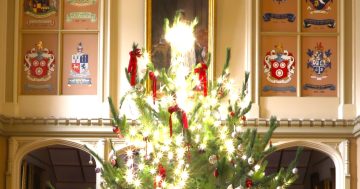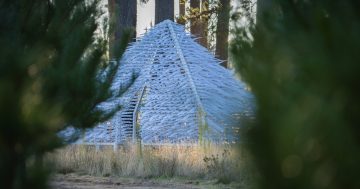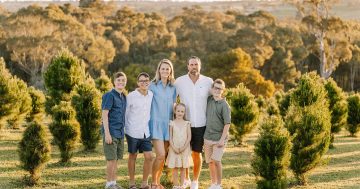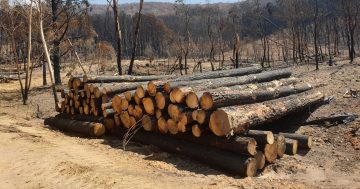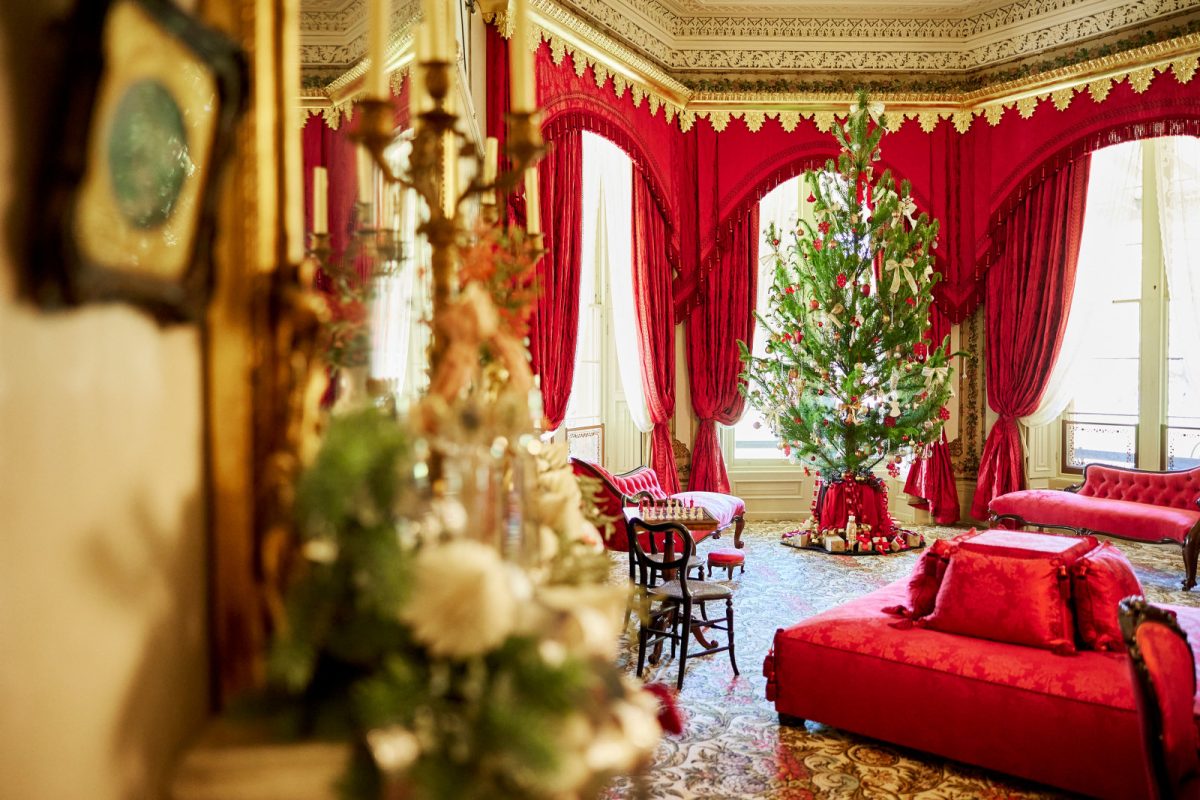
The radiata pine tree that started life as a seedling in a nursery near Tumut is now taking pride of place in Sydney’s Vaucluse House this Christmas. Photo: NSW Museums of History.
From the forest floor to the foyers of grandeur: two pines that had their formative years in Blowering Nursery near Tumut have been selected as Christmas trees at Government House and Vaucluse House in Sydney.
It’s a Christmas tradition that for years has meant the finest pines have been hand-picked – well, almost – to hold pride of place and lend a festive air for visitors to the iconic heritage-listed buildings.
The five-metre-high radiata pines, sourced from Penrose State Forest, were recently transported from the Southern Highlands to the centre of Sydney after a rigorous selection process to find perfectly shaped Christmas trees.
Forestry Corporation’s Moss Vale area supervisor Tom Bagnell said the trees had been carefully planted as seedlings five years ago.
“They have been nurtured before being carefully selected to radiate peace and joy for the many visitors to both Government House and Vaucluse House over the festive season,” he said.
Installed and decorated by the NSW Museums of History team, the Vaucluse House tree has been curated with a collection of ornaments including aromatic dried orange slices and cinnamon bundles, twinkling glass spirals and shimmering handmade gold paper decorations printed with Victorian-era illustrations.
It also features white crocheted stars handmade by the NSW Museums of History soft furnishings volunteers.
The task of embellishing the tree took six people about five hours.
Three ladders were required to dress the highest branches and top the tree with its crowning red-and-gold bow.
Completing the festive transformation of Vaucluse House, other rooms have been decorated with red ribbons, garlands, paper chains, Christmas stockings and seasonal dried herbs and vegetables from the property’s kitchen garden.
Visitors are welcome to visit Vaucluse House, in Sydney’s eastern suburbs, to enjoy the festive collection, which will be on display until 31 December.
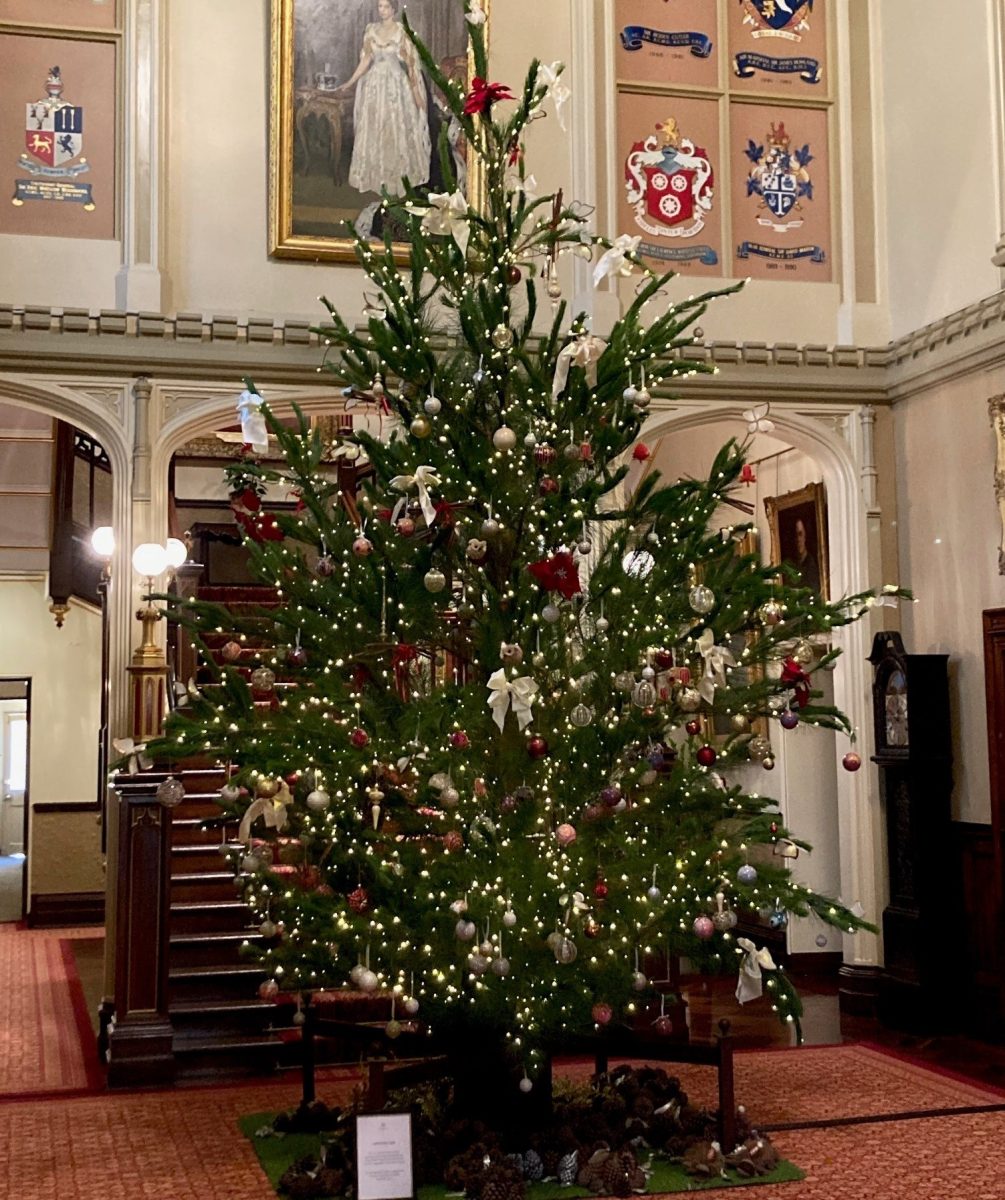
Each year the foyer of Government House in Sydney provides the perfect backdrop for the annual Christmas tree display, with this example also starting life at Forestry Corporation’s Blowering Nursery, near Tumut. Photo: NSW Forestry Corporation.
Penrose State Forest had its own special Christmas story, Mr Bagnell said.
The plantation was established in 1920, one of the earliest in the state.
After a fire destroyed the plantation and Penrose village in 1939, the idea of growing pine was initially discarded by the then-Forestry Commission.
“However, following significant rainfall post‐fire, the pine regeneration was so significant they decided to retain the plantation, initially to sell as Christmas trees,” Mr Bagnell said.
“By the early 1950s, the sale of Christmas trees to the Sydney market was a viable enterprise, with some 90,000 trees being supplied by the Forestry Commission in one year alone.”
Forestry Corporation has grown pine on the site ever since, with extensions to the plantation area in the 1960s and ’70s.
Radiata pine (Pinus radiata) was originally named Pinus insignis, or ”remarkable pine”, an apt name for a tree with many practical uses.
This species has been grown in the Moss Vale area for more than 100 years.
“Radiata pine is used in construction, landscaping, and pulp and paper products, with NSW state forest pine plantations producing enough timber to construct a quarter of houses built in Australia each year,” Mr Bagnell said.
Although technology and mechanisation have superseded many manual jobs in forest management, Mr Bagnell said one important task in the forest had remained unchanged over the past century.
“That is the planting of our pine trees,” he said. ”This task is still undertaken one tree at a time, manually, by keen tree planters carrying trays of pine seedlings and a shovel, planting over 1000 seedlings per person, per day.
“The plantation area from where these Christmas trees were selected will reach maturity in another 25 to 30 years, where they will then contribute to supporting the sustainable natural resource requirements of future generations.”
Penrose State Forest is also popular for a range of recreational activities, including camping, horse riding, mountain biking, bird watching, mushroom foraging, and photography and film – featuring in many television advertisements and films.
Another Christmas activity idea!







